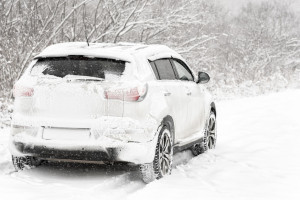Tips from an auto mechanic on how to care for your car this winter
 Having a winter game plan for your car isn’t just smart; it’s a must. Winter driving conditions can make driving inherently more dangerous – and it can also be damaging to your vehicle.
Having a winter game plan for your car isn’t just smart; it’s a must. Winter driving conditions can make driving inherently more dangerous – and it can also be damaging to your vehicle.
Here’s what to know about keeping your car on the road safely into spring.
Winter weather maintenance tips from an auto mechanic
1. Be mindful of the battery
A car battery is a small but mighty component of your vehicle. Without the battery, the car can’t start, and without the car starting, you won’t have heat inside and may be stuck somewhere cold, wet and miserable. It’s easy to check the charge on your car’s battery – a local auto mechanic shop can check it for you, or you can buy a tool to help you check the charge at home. If the charge is low, recharging it or purchasing and installing a new battery is often a cheaper (and safer) solution than being stranded outside on the side of the road.
2. Don’t neglect maintenance
It can be a hassle getting the auto mechanic in the dead of winter, so make a stop in before it gets too chilly. Winter weather can be brutal, causing hoses to crack and belts to fray, so it’s important to make sure these are inspected at least once during the winter season. Staying on top of oil changes is also crucial, as oil thickens in the cold and can cause problems with starting and potential engine issues. Finally, keeping an eye on your coolant ratios will keep coolant from freezing. A ratio of 50/50 water to antifreeze is usually sufficient, and an honest mechanic can help ensure the mixture that’s right for your vehicle.
3. Check your tires
Traction is key for safe driving. You don’t need to buy a whole set of winter-only tires, but you should make sure that your tires have enough tread to handle any driving in the snow. If you’ve been putting off buying new tires, now is the time to make a smart investment. If you’re not sure if it’s time, a visual inspection can help you figure it out. Many tires have a tread wear indicator that give a visible indication that it’s time to replace them. Any tires with a tread depth of less than 3/32” should be replaced soon.
4. Be salt smart
While you don’t want to run your car through a car wash when it’s cold or snowing out, you also want to make sure you pay some attention to what’s accumulating on your car’s finish. While most people consider car paint to be an aesthetic concern, if left too long, salt, sand, and water accumulation can lead to rust, which can eat all the way through the metal of your car’s exterior.
This can lead to water damage and other problems occurring on the interior of your vehicle – all from a little salt! Plus, salt and grit build up on windows can reduce visibility, making driving dangerous. On days when it’s sunnier and dry, take a few minutes to wipe as much of your car clean as you can and spring for a protective wax when possible.






